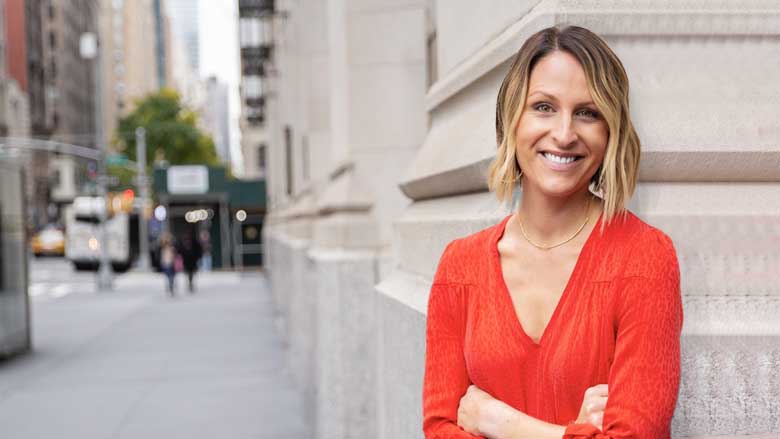Funding Circle is a crowdlending platform that lets individuals and institutions loan money to small businesses. Founded in the UK in 2010, the firm has about 70,000 registered lenders who have lent more than £223,000,000.
Last October, Funding Circle raised a $37MM Series C from Accel Partners, Union Square Ventures, Ribbit Capital, and Index Ventures, and announced a merger with a California-based alternative lending startup called Endurance Lending, which was founded by Alex Tonelli and Sam Hodges. Endurance Lending was renamed Funding Circle USA.
It’s no secret that over the last several years small businesses have found borrowing money from banks to be difficult. Alternative lending firms such as On Deck Capital and Funding Circle, and automated loan brokers such as Lendio, have stepped into the breach.
In brief, here’s how Funding Circle USA works:
- Businesses can apply to borrow up to $500,000 for terms of three, four, or five years.
- Approved loans are funded within two weeks.
- Interest rates charged on loans range between 9.99% and 17.45%.
- Rates are fixed, amortization is straight line, and there are no pre-payment penalties.
- Funding Circle earns an origination fee of 2.99% from the borrower and a servicing fee of 1% from the investor.
Q. Alex, did you and Sam participate in the fundraising effort?
A. Yes. Our companies were simultaneously raising money and talking to many of the same investors. At a point in time when we felt fairly certain we wanted to do the deal, we clued the investors into our plans and pitched together. We believe our combined vision and belief that marketplaces are global and that together we could grow much faster than we could individually was an exciting prospect to the investors we considered.
Q. You had earlier raised $1.5MM for Endurance. Did your Endurance investors participate in the Funding Circle round? Do they remain investors in the combined company?
A. Endurance investors received some cash as part of the transaction, but also invested a meaningful amount of their holdings into Funding Circle. Demand amongst existing investors on both sides to buy more was very high.
Q. Why did Funding Circle decide to buy rather than build?
A. You’ll have to ask Samir, Andy, and James to be sure. When they came to us and said they were considering buying or building in the U.S., we obviously weren’t excited at the prospect of competing with a company who had achieved so much. After they looked at other players in the market, I believe they saw we were fast on the right track and also didn’t relish the prospect of competing with us. At a certain point, both sides realized that we’d be foolish not to combine forces as anything that meaningfully improves our chance of achieving our objectives is worth doing.
Q. How much of the $37MM raised will be dedicated to your U.S. efforts?
A. Most of the capital that was not distributed will be concentrated on the U.S. As a credit to the UK efforts, they are nearing profitability and do not require a large cash infusion to continue their meteoric growth. The amount of funds we could raise was a big reason why doing the deal was attractive to us. It allows us to run, not walk, at the answer.
Q. Is the model in the U.S. the same as in the UK?
A. The models are very similar. One major distinction is that the UK capital base is largely retail investors whereas ours is only accredited and institutional investors. In the U.S., that restriction is a conscious regulatory strategy choice.
Q. How does regulation of Funding Circle differ between the U.S. and the UK markets?
A. In the U.S., we like to say we have 52 regulators. All 50 states, the SEC, and FINRA. That speaks to both lending and securities law. Lending law for commercial loans requires attention and expertise, but is much less onerous than is lending to consumers. Challenges with crowdfunding in securities law are well-documented. While the regulations can be onerous, they exist for good reason and so we’ve worked closely with the regulators to find a solution working within the system. An unfortunate compromise is that we have deemed it too onerous at this juncture to include retail investors, but hope in the long-term to be able to expand.
In the UK, there is significantly less regulation, particularly on the securities side. That said, the Financial Conduct Authority (FCA) is beginning a program to regulate the market in the near-term. This is actually a move that we have been encouraging because it provides standards and legitimacy to the industry.
Q. Are your U.S. lenders making loans or investing in securities (as with Prosper and Lending Club)?
A. Lenders are either investing in loans or a fund offering.
Q. How big is the market for P2P business loans, and how does that compare to the demand for P2P loans from individuals?
A. We don’t generally draw a distinction between P2P (or in our case, investor to business) loans and the general market for small business loans. That market is about $250B annually in the U.S., with a large shadow market that is not getting financed and is hard to quantify. This is a phenomenally large market. To put that in perspective, Lending Club did ~$2B in new loans last year. This is to say that marketplace crowdfunding is a disruptor, not a cottage industry in both consumer and business loans. We expect to be able to take on the banks and build a better financial system. On both sides, we’re just scratching the surface, and we’re just talking about the U.S. now.
Q. Are you making loans to businesses or individuals? Are individuals offering personal guarantees? Are these loans collateralized?
A. We are making loans to businesses. However, one of our credit advisors like to point out that “businesses don’t pay you back, people pay you back.” In short, individuals are an important part of the credit evaluation, although the business is the center of the analysis. Getting this balance right is why we think it’s been so hard for institutions to lend effectively to small businesses. There’s a tendency to treat borrowers as one or the other. We do both.
We do require a personal guaranty and we take collateral in all the business assets available.
Q. Tell me about your underwriting criteria. Is the Funding Circle risk model, honed in the UK, relevant in the U.S. or are you starting from scratch?
A. We have an underwriting model that combines process automation, data science, and human review and, as mentioned above, combines both business and personal factors. The UK built their model in much the same way, but had developed it over more years with much more data. A big leap forward we’ve taken has been the ability to produce a hybrid U.S.-UK underwriting model. Andrew Mullinger, one of the Co-Founders, has moved to San Francisco and is running credit globally for us.
Q. How much control do your lenders have in selecting businesses they want to back?
A. Whole loan investors are now picking and choosing freely the loans that they wish. Soon, individual investors will have that ability as well. Currently, individuals invest through a fund product.
Q. Who pays Funding Circle the loan origination fees, the lenders or the borrower? Are there any additional fees – for ongoing service, for instance – and who pays them?
A. The borrowers pay a 2.99% origination fee and lenders pay a 1% servicing fee.
Q. You’ve staffed up quite quickly in the U.S. Are you still hiring and for which positions?
A. We went from 15 to 40 in about two months. It was a whirlwind. I’d expect we’ll get to 60 or so over the coming months. So yes, we are still hiring for a multitude of positions and plan to be hiring for the foreseeable future. We’re looking for great people who want to change the financial world to join our team. Please see our current listings at www.fundingcircle.com/us/careers.
Q. Can you compare and contrast Funding Circle with On Deck Capital, an alternative small business lender, but one not using the P2P model?
A. We’re both responding to the meta-problem of the lack of financing to small business, just in different ways. On Deck has been a leader in automated underwriting and we’ve taken cues from them about how to build better automation and get to decisions faster. Ultimately, though, they are a different product and we don’t consider them a competitor. Their loan sizes are much smaller, their term is much shorter, and their rates are much higher. They are also able to make a decision much faster and are able to offer loans to riskier borrowers.
Q. Lending Club is also expanding into small business lending. How do you see the market evolving? Is this a winner-take-all market? Or do you expect to see multiple new competitors in the months ahead?
A. This is definitely not a winner-take-all market. I’ll point to the $250B known market size plus the unserved. It would be difficult for any lender to take that whole space. We welcome Lending Club’s entrance into the small business market, as we feel this will enhance the range of options available to small businesses. Like On Deck, their product is different than ours in the sense that ours look like more traditional bank loans whereas theirs feel more like a working capital solution. Again, both are useful, and we’re glad that small businesses are getting better options. I would continue to expect others to attempt to solve parts of the small business lending problem and see that as a good thing. The broken bank model needs to be fixed.
Q. With institutional investors such as hedge funds increasingly dominating the P2P lending space, are individual lenders at a disadvantage? Do you expect to see more managed funds along the lines of Lend Academy Investments?
A. I believe quite the opposite in that the crowdlending platforms are doing everything they can to empower individual investors at the expense of institutional investors. That said, to reach the size and scale we hope to achieve, institutions play a key part of that puzzle and so finding ways to include them is an important part of building a marketplace. When you look at the large financial markets of the world, institutions play a key role.
Q. How do P2P loans correlate with other fixed income investments? Do you believe they do or will constitute a separate asset class?
A. We don’t think it makes sense to think of a consumer loan as the same as a small business loan or even as a merchant cash advance loan. They are different asset classes. The funding model (P2P) is less relevant than the fact that there are dislocations in certain asset classes. The spread between rates offered and loss rates in small business loans is gigantic. That’s a market inefficiency that a marketplace can fix. Given the size of the dislocation, we do expect our asset class to outperform other fixed income investments.
Q. You share an investor with Prosper (Accel Partners) and with Lending Club (Union Square). How do you ensure that strategic information remains confidential?
A. First, we trust our partners to maintain high standards of integrity and Accel (Harry Nelis) and USV (Andy Weisman) exemplify that. Each firm has internal controls which they have explained to us, but at the end of the day, business is a lot about trust. Second, we don’t have too many state secrets. We pride ourselves on transparency and so there isn’t much we haven’t either put on our website or told Prosper or Lending Club ourselves.
Q. Funding Circle lenders in the UK include individuals, banks, and even the government. Who are your lenders in the U.S.? How are you attracting them?
A. We work with a variety of lenders in the U.S. – accredited individual investors (not just finance jocks, there are lot of doctors and homemakers as well), investment funds, family offices, and others.… We hope to continue to deepen and diversify that investor base.
Q. Do you expect banks themselves to become Funding Circle lenders?
A. Yes, we see a big opportunity for banks to begin lending on our platform down the road.
Q. What is the profile of Funding Circle borrowers in the U.S.? How do you attract them?
A. One thing you learn quickly at Funding Circle is that every borrower has their own unique story, which is one reason business lending is harder than consumer lending. That said, our borrowers are mainly hardworking “main street” small business owners who are looking for a source of capital that’s easier than banks and less expensive than loan sharks. Our borrowers come from a range of different industries and regions of the U.S., which makes for a great investment portfolio and an even better story. At the end of the day, we want to drive positive economic growth and development, and we believe that starts with small business. We hope that by providing the best business finance alternative, we will continue to attract these businesses.
They are also inherently creditworthy businesses and individuals. Investors are usually surprised at how high the credit scores are for the individuals and how much underlying asset coverage and debt service coverage there are in the loans. These are people who deserve a bank loan and the system is letting them down.
Q. You seem to be making a special effort to work with franchisees. Why are franchisees and attractive market for Funding Circle?
A. Franchises are attractive to us for a few reasons. First, as franchise owners ourselves, my Co-Founder Sam Hodges and I understand the franchise space well. Second, franchises allow for a very scalable network to access new business. Third, franchises are easier to underwrite because you can benchmark individual stores against company averages.
Q. Is there a specific type of franchise that is a better match for Funding Circle than the others? How are you reaching them?
A. No – we work with a variety of different franchisors. We have a number of great franchise relationships and networks that we work through. There is a lot of word-of-mouth partnership development.
Q. Don’t most franchisors offer special financing for franchisees?
A. You’d be surprised how poor financing options are to small businesses in general, and franchises are no exception.
Q. What is your current loan volume and how are those loans performing?
A. We are ahead of pace to lend $100M in 2014. So far, our loss curves are lower than we had anticipated. That said, good risk means hitting your loss curves, not underperforming them. It means we’re leaving a lot of good business on the table. Still, it’s better than losing more than you thought.
Q. How important is mobile to you in working with your prospects, your borrowers and your lenders?
A. Currently, mobile is not a focus area for us. In the UK, we’ve released a mobile app targeted towards our investors. I’d expect to do the same in the US over time. I don’t think it will be a large part of the strategy with borrowers, but you never know.
Q. Which countries will Funding Circle expand into next?
A. We’ve made no secret about the fact that we intend to build a truly global platform. We’re evaluating opportunities on several continents and look forward to building a more powerful marketplace by doing so. So far, even just by being in two countries we’ve seen the power of the global thesis playing out. Markets really do connect.




10 comments On Q&A with Alex Tonelli of Funding Circle USA
RT @redphase: A deep dive with alternative small business lending marketplace @FundingCircleUS co-Founder @nalextonelli: http://t.co/KlTZzv…
Great article Jim! We at Lend Academy are huge supporters of Funding Circle and the Funding Circle USA team. Nice to see an in depth Q&A with Alex.
RT @redphase: A deep dive with alternative small business lending marketplace @FundingCircleUS co-Founder @nalextonelli: http://t.co/KlTZzv…
Have questions about @FundingCircleUS ? See an in-depth Q&A with Co-Founder @nalextonelli at Blue Dun! http://t.co/I4fR6m8xOS @redphase
A deep dive with small business lending marketplace @FundingCircleUS co-Founder @nalextonelli: http://t.co/1VTlUqMV5P @LendAcademy
RT @brustkern: A deep dive with small business lending marketplace @FundingCircleUS co-Founder @nalextonelli: http://t.co/1VTlUqMV5P @LendA…
RT @brustkern: A deep dive with small business lending marketplace @FundingCircleUS co-Founder @nalextonelli: http://t.co/1VTlUqMV5P @LendA…
RT @redphase: RT @FundingCircleUS Have questions about @FundingCircleUS? See an in-depth Q&A with Co-Founder @nalextonelli! http://t.co/KlT…
Pingback: Peer to Peer Lending News Roundup – March 29, 2014 ()
A Q&A with @FundingCircleUS
http://t.co/oCj6Oew6dD
Business loan rates from 9.99% to 17.45%